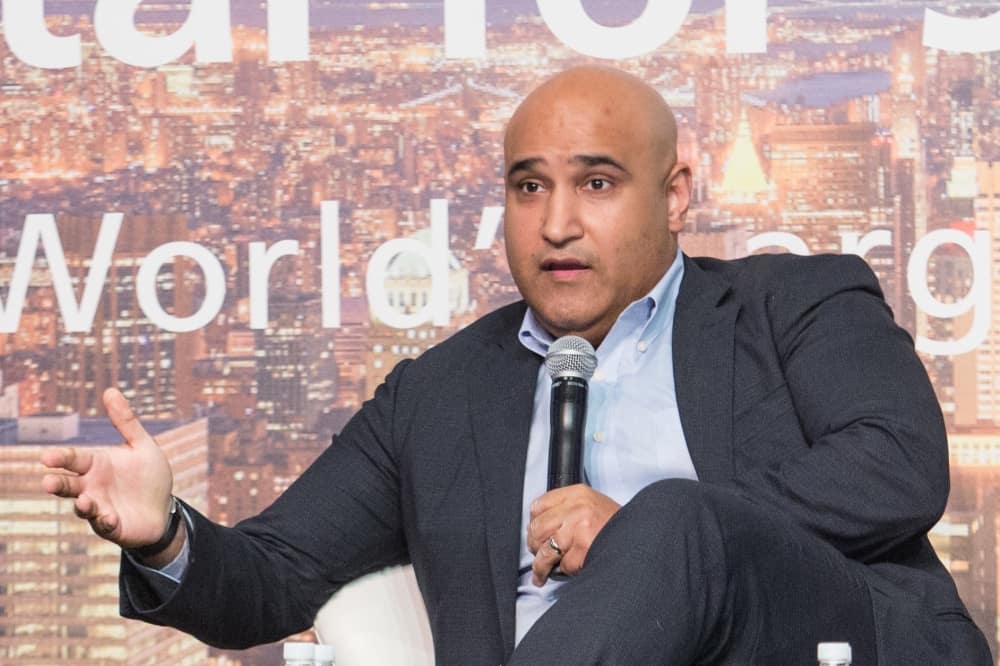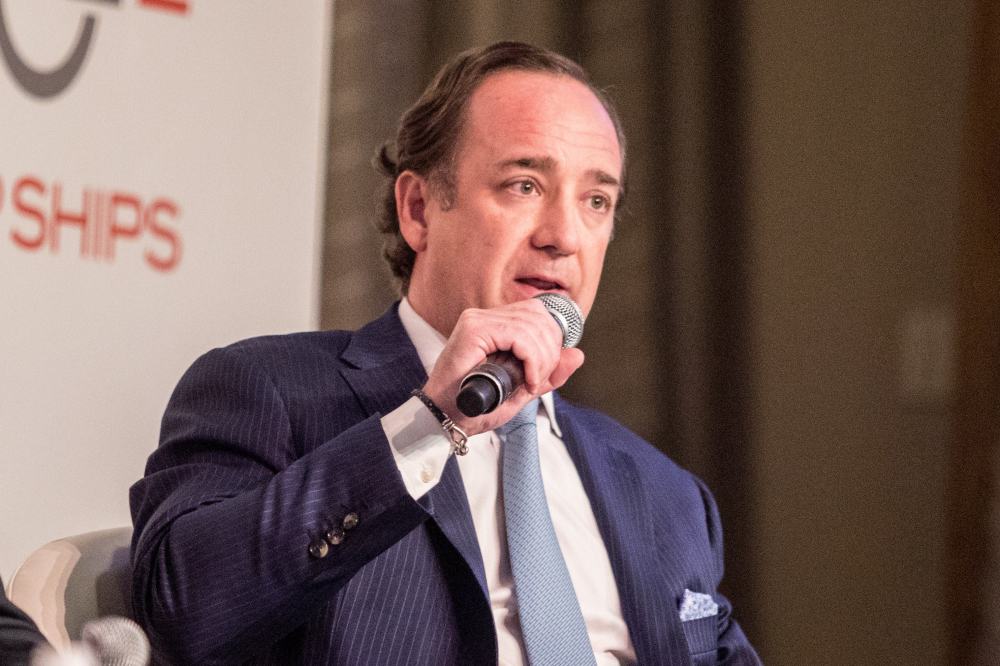In the recent flood of earnings reports by U.S.-listed ocean shipping companies, common themes have risen to the surface: Third-quarter results are still in the red and weaker than expected, earnings are being impaired by out-of-service time due to exhaust-gas scrubber installations, rates are up sharply in the fourth quarter, and as sentiment brightens, dividends are now back in vogue.
Here come the dividends
“We think the reemergence of dividends will become a major theme in shipping equity markets over the next 12 months as companies institute and grow payouts in response to firming day rates and cleaned-up balance sheets across the group,” asserted Amit Mehrotra, transportation analyst of Deutsche Bank, in a new client note.
Dry bulk owner Genco Shipping & Trading (NYSE: GNK) has just announced a regular dividend of $0.175 per quarter – its first regular dividend since 2008 – plus a special dividend of $0.325 per share.
During the quarterly conference call on Nov. 7, multiple analysts congratulated Genco CEO John Wobensmith on the arrival of his new dividend with the exuberance of friends congratulating a father on the birth of his newborn baby.
Wobensmith explained that the new fixed dividend marked “an important milestone in achieving a key capital-allocation objective in our long-term plan.”
He said that the 17.5 cents per quarter payout was derived from putting a yield “not on today’s share price, but on what we believe our NAV [net asset value, the market-adjusted value of assets plus cash, minus liabilities] is, while also looking at sustainability.” He put Genco’s NAV in the mid-$14 per share range. At mid-day on Nov. 7, its shares were trading at around $11 per share, implying a discount to NAV of around 25%.

“Our number-one goal is to increase the valuation of the shares, which are trading below NAV. We felt the dividend was the best tool in our belt to move the valuation of the stock closer to NAV, where it should be,” said Wobensmith.
Genco’s decision was just the latest in a series of dividend moves and comments. On Nov. 5, product-tanker owner Ardmore Shipping (NYSE: ASC) said that it was “poised to resume” its dividend of 60% of earnings from ongoing operations.
Crude-tanker owner Euronav (NYSE: EURN) changed its dividend timing on Oct. 29 from semi-annual to quarterly “to repatriate cash flows more quickly.” On Oct. 24, crude-tanker owner DHT Holdings (NYSE: DHT) upped its quarterly dividend from $0.02 to $0.05 per share despite a net loss and pointed out how current rates would translate into dividends going forward of at least 60% of net income. On Oct. 23, Scorpio Bulkers (NYSE: SALT) announced a large special dividend comprised of shares.
Mehrotra believes more shipping dividend upside is around the corner. “We see opportunity for Euronav and Star Bulk [NASDAQ: SBLK] to implement high-yielding dividends over the next 12 months, a potential catalyst for the stocks,” he said.
Dividend policies over past cycles
In the shipping upcycle during the mid-2000s, listed shipping companies attracted yield-seeking investors by offering very high dividend payouts; when earnings didn’t support them, payouts were funded with debt.
Shipping companies in that earlier cycle were very highly leveraged with debt for newbuilding orders, and when all of that debt had to be restructured after the financial crisis, the banks inserted new covenants preventing dividends, and share pricing collapsed.
Dividends have come back up whenever rates in a particular segment rise, such as in the tanker sector circa-2015. During a Marine Money conference that year, Evercore Senior Managing Director Mark Friedman highlighted the risks of paying hefty dividends in a highly cyclical industry with largely spot employment, warning, “There has been too much focus on the dividend and as the tanker sector gets to a better place, we are now seeing a dividends ‘arms race.’ Why am I skeptical about high dividends? Because I’ve seen a good chunk of the industry go bankrupt through the cycles.”
The current situation is that shipping companies have dramatically reduced their debt over the past decade and fundamentals are now finally shifting results from the loss to the profit column. Although the need to cover losses is diminishing, the ability to deploy cash for fleet growth is limited. Secondhand ship-purchase opportunities are being constrained by a high bid-ask spread (as sellers believe asset values are poised to rise), while newbuilding activity is extremely limited due to uncertainty over future carbon-emissions regulations and resultant fears over obsolescence risk.
Consequently, listed ship owners have allocated extra capital less toward growth and more toward paying down debt and buying back shares.

Buybacks became increasingly popular in 2018 and early 2019 as shares traded at extreme discounts to NAV – particularly given the negative effect of U.S.-China trade tensions on listed shipping stocks. Yet buybacks have their critics. While they hypothetically return value to shareholders, that depends on what happens to the share price; in contrast, dividends definitely return value to shareholders in the form of cold, hard cash. Wobensmith maintained on the Genco conference call, “We’ve looked at the share repurchases of a number of our peers and we believe they have had no effect on the share price.”
As share prices increase and quarterly profits appear more sustainable, the pendulum appears likely to swing away from buybacks and more toward dividends. Expectations of rising dividends could, in turn, spur shipping share prices to rise in anticipation of those paybacks.
Earnings roundup: Despite optimism, more losses
After market close on Nov. 6, Genco Shipping reported a net loss of $14.6 million for the third quarter of 2019, compared to net income of $5.7 million in the same period last year. Excluding non-cash items, adjusted losses of $0.06 per share were worse than the consensus estimate for $0.0 per share.
The company achieved a fleetwide rate for its dry bulk vessels of $11,687 per day in the third quarter, up from $10,696 per day the year before. Rates are much higher for the fourth quarter, with 62% of the company’s available days for its Capesizes (bulkers with capacity of over 100,000 deadweight tons or DWT) booked at $19,779 per day.
Genco’s results have been heavily impacted by out-of-service time for scrubber installations. Starting on Jan. 1, any ship without a scrubber will have to switch to more expensive low-sulfur fuel. The third quarter marked the busiest drydocking period in the company’s history, with 22 of Genco’s bulkers at the yards for scrubber installations.

After market close on Nov. 6, Eagle Bulk (NASDAQ: EGLE) reported a net loss of $4.6 million for the third quarter of 2019 versus net income of $2.6 million in the same period last year. Its loss of $0.06 per share was worse than the consensus forecast for a loss of $0.03 per share.
Eagle’s ships – which are in the Supramax and Ultramax bulker categories (45,000-65,000 DWT) – earned an average of $11,014 per day in the third quarter, down 2% year-on-year.
On a positive note, Eagle Bulk CEO Gary Vogel said that the rates being secured in the fourth quarter “represent the highest figure we have achieved in more than five years.” The company has 61% of available fourth-quarter days fixed at an average rate of $13,150 per day.

Before market open on Nov. 7, crude and product-tanker owner International Seaways (NYSE: INSW) reported a net loss of $11.1 million for the third quarter of 2019 versus a loss of $47.8 million in the same period last year. The $0.43 loss per share in the latest period was steeper than the $0.36 loss expected by analysts.
In the crude-tanker sector, the company’s very large crude carriers (VLCCs, tankers that can carry 2 million barrels of crude oil) in the spot market earned $22,434 per day, up sharply from $13,891 per day in the same period last year. Spot gains for Suezmaxes (tankers than can carry 1 million barrels of crude oil) were more moderate, to $18,470 per day from $17,138 per day the year before.
In the product-tanker sector, spot rates for INSW’s LR2 tankers (80,000-119,000 DWT) nearly doubled year-on-year, jumping from $8,868 per day in the third quarter of 2018 to $17,253 per day in the most recent period.
INSW CEO Lois Zabrocky said on the conference call that the tanker market “reached an inflection point towards the end of the third quarter” and that rates being achieved in the fourth quarter are “significantly higher.”

Before market open on Nov. 7, product-tanker owner Scorpio Tankers (NYSE: STNG) reported a net loss of $45.3 million for the third quarter of 2019 compared to a net loss of $71.7 million in the same quarter last year. Adjusted net losses of $0.92 per share in the latest quarter came in worse than analyst expectations for a loss of $0.81 per share.
On a fleetwide basis, Scorpio Tankers’ ships earned an average of $13,560 per day, up from $10,519 per day in the third quarter of last year. Its largest vessels, its LR2s, earned $15,974 per day in the most recent period, up from $12,532 per day the year before. In the fourth quarter, Scorpio has 47% of its LR2s booked at a much higher rate of $26,000 per day.
Scorpio Tankers’ results follow the same patterns as other listed companies: Third-quarter earnings reflect weaker rates on voyages booked in the second quarter, and dramatically higher spot rates seen in recent weeks will be partially reflected in the fourth-quarter results and more fully reflected in the first quarter of 2020.
In general, this forward visibility and the guarantee of much improved rates – at a time when both debt levels and growth opportunities are low – is likely to spur ocean shipping companies to ramp up their dividend payouts. More FreightWaves/American Shipper articles by Greg Miller









